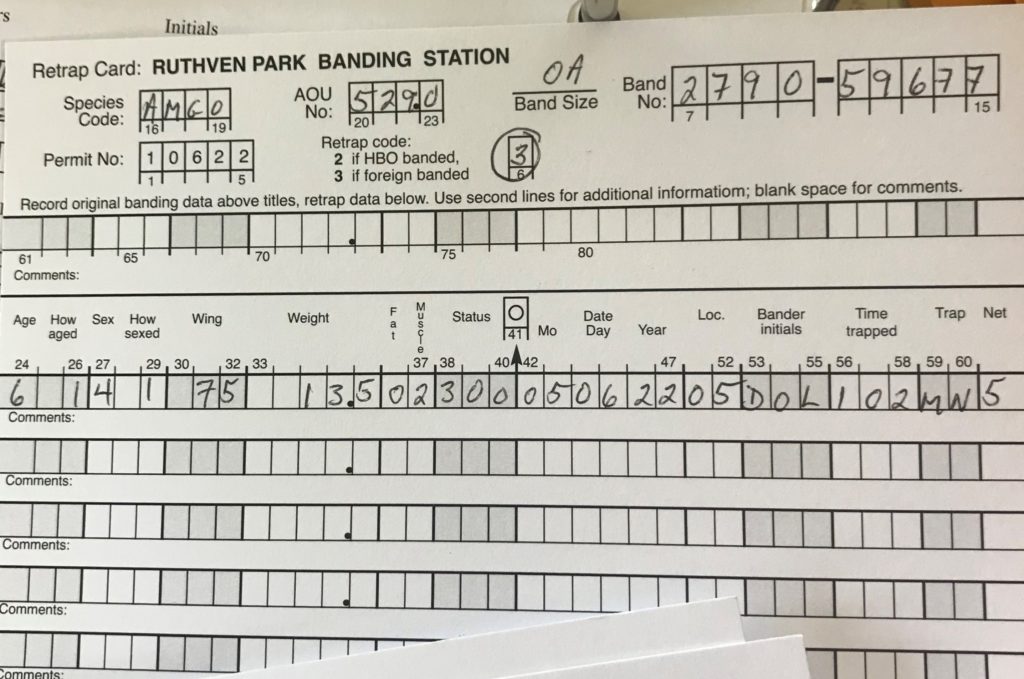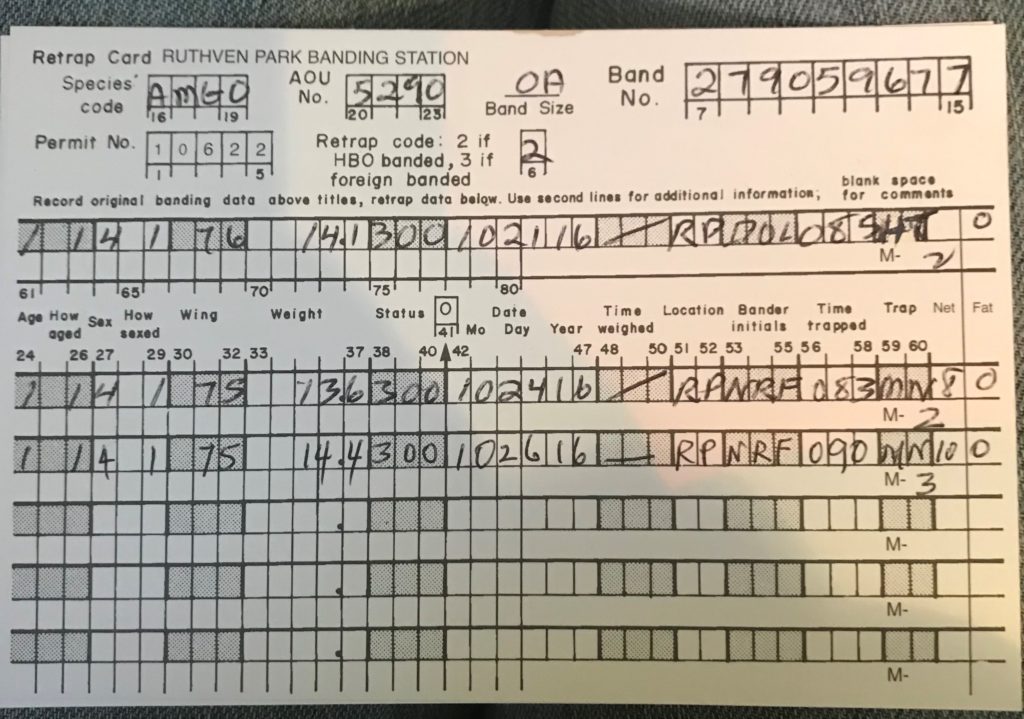The important thing about banding birds is to recapture them so we can learn about their travels and history. Otherwise there wouldn’t be much point in banding them in the first place. At a banding station it’s quite common to recapture some birds time and time again as they have taken up living in the area. This can be a pain if it’s happening daily. {One year we were recatching a Chipping Sparrow – not just daily but multiple times in a day. Everyone knew its band number off by heart. It was getting caught in a baited walk-in trap. I would often pose the question to visiting students when I told them about it: is this bird smart? or dumb? Almost all came down with a dumb verdict….until I pointed out that the bird seemed to know that there was high energy, very nutritious food inside the trap and had learned that the big human monsters would simply take him out, weigh him, then let him go. After that explanation, they thought maybe the verdict should be “smart” and wondered why the other birds were so dumb.}
It’s a great feeling when you recapture a long-distance migrant after it’s been gone for a year. Like the two Baltimore Orioles we got the other day. They would have travelled all the way down to maybe Belize and then found their way back. Just think of what they saw and experienced en route. Crossing the Gulf of Mexico, dealing with the dazzling lights of the eastern seaboard, waiting out adverse weather systems, and trying to find food and shelter in unfamiliar landscapes but still find their way back to the Farm. It’s miraculous.
Although it happens much less often, it’s exciting to recapture a bird that has been banded somewhere else. We have good results with Northern Saw-whet Owls and Snow Buntings as banders are targeting them and are working out effective ways to attract and capture them. But you can also get random recaptures – like the Yellow Warbler we caught last Spring that had been banded in Erie Pennsylvania the year before. It had a sizeable fat load so it wasn’t going to stick around, it was on its way. And, sure enough, we didn’t see it again. I wonder where it’s nesting area is.
But one of the most interesting recaptures, to me, is of a bird that I’ve banded and don’t see for a long period of time and then…..it shows up again. Where the heck has it been!? A few days ago, as the retrap card at the top of the page indicates, we recaught an adult male American Goldfinch. I didn’t recognize the band series and thought it might be a “foreign retrap”; i.e., banded somewhere else. But Marnie has spent a great deal of time digitizing our old retrap records and she recognized the number. As you can see below, the bird was originally banded in the Fall of 2016. At that time it was an adult bird meaning that the earliest it could have hatched was 2015…but maybe in years before that. So this goldfinch is approaching 7 years of age at least! I wonder where it’s been in the intervening years.
Banded 23:
1 Least Flycatcher
1 Downy Woodpecker
1 Hairy Woodpecker
1 Philadelphia Vireo
1 Tree Swallow
1 House Wren
1 Gray Catbird
1 Swainson’s Thrush
1 American Robin
1 Song Sparrow
1 Lincoln’s Sparrow
2 Baltimore Orioles
2 Common Grackles
1 Tennessee Warbler
5 Common Yellowthroats
1 Yellow Warbler
1 Indigo Bunting
ET’s: 52 spp.
Rick


